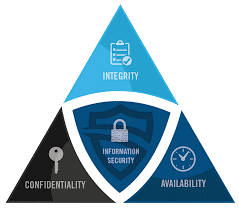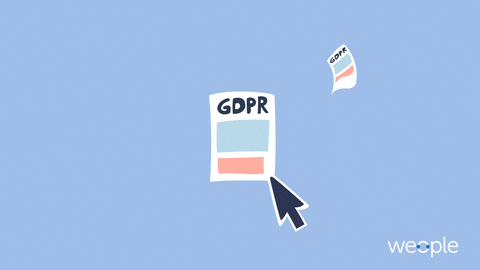How to Create an Effective Security Policy for Your Business
 Every facet of how businesses function, from how we share information to how we communicate, has been altered by technology. For example, in-person meetings have given way to video conferencing. The internet’s accessibility now makes it possible for even small businesses to reach a global audience, and online banking facilitates payment for these international transactions.
Every facet of how businesses function, from how we share information to how we communicate, has been altered by technology. For example, in-person meetings have given way to video conferencing. The internet’s accessibility now makes it possible for even small businesses to reach a global audience, and online banking facilitates payment for these international transactions.
Savvy business owners like you have always kept up with the newest technological breakthroughs to enhance productivity, run more efficiently, and give the best possible client experience. Unfortunately, you must also contend with the cybersecurity risks that come with the use of digital technologies.
A security policy is not a perfect solution for preventing cyberattacks, but it does create a solid structure for protecting sensitive business data and should be prioritized. This post will guide you through the steps necessary to create an effective one for your company. But first, let’s talk about what it is and why your business needs a security policy in the first place.
What is a Security Policy?
A security policy includes pre-approved organizational practices that outline how your company prevents security issues and addresses data breaches. In this context, security concerns may include:

Data Integrity – the overall completeness, accuracy, and consistency of the data in your care.
Confidentiality – Unauthorised individuals accessing or releasing information
Availability – information being unavailable when it is needed or being available to more users than is necessary.
The Importance of Having a Security Policy for Your Business
The rise in data breaches globally since businesses switched from paper to digital storage is perhaps the most compelling reason why your company needs a security policy. Almost every day, many governments and global brands’ websites are hacked. These breaches will cost an estimated $10.5 trillion globally by 2025, up 15% year on year, according to Cybersecurity Ventures.
You may be tempted as a small or medium-sized business owner to overlook the necessity of security policy in your organization owing to its size, but you should not. According to Verizon, small businesses account for 28% of all global data breach victims. Which means your company is just as exposed to cybercrime as any other giant corporation.
So, whether you own a small, medium, or large organization, you must design a security policy to secure the data of your clients and staff.
Having clearly defined rules about use of and storage of data in your business will not only protect your customers but also prevent your employees from unwittingly performing illegal acts that could have you in court.
The Step by Step Guide to Creating an Effective Security Policy
Despite the importance of establishing a security strategy for a business, just a few companies create one because it can be a time-consuming and tiresome task. To make things easier, follow the steps below, and you’ll develop a security policy in no time.
1. Conduct a Risk Assessment
 When it comes to cybersecurity, risk assessment is always a brilliant place to start. This is the only method to guarantee that your security policy is comprehensive. Here are some questions to ask to assess what vulnerabilities exist in your security framework right now:
When it comes to cybersecurity, risk assessment is always a brilliant place to start. This is the only method to guarantee that your security policy is comprehensive. Here are some questions to ask to assess what vulnerabilities exist in your security framework right now:
- What Are Our Most Important Assets?
- What risks face these assets?
- Are you circulating any potentially objectionable attachments?
- What are your exposures to improper use of customer or employee information?
- Do you have any data that should not be made public?
- Do you frequently send or receive huge files and attachments via the internet? How is this information safeguarded?
We advocate using reporting and monitoring tools to assist you in finding answers to these queries. Not sure where to look for these tools? You don’t have to go far to find it. Many internet service providers include reporting information as part of their service.
Pro Tip: If you decide to do this, make sure your employees are informed that you will be recording their activities for the purposes of risk assessment. Otherwise, it may be interpreted as a violation of their privacy.
2. Use a Template
We understand that creating a security policy from the ground up can be a daunting task. There are numerous moving pieces to deal with, and if you are not careful, you may lose sight of important details.
So, how do you keep track of everything? We recommend that you start by developing broad policies that cover all essential aspects of your business in a consistent format. All you need to do is a quick Google search to find a variety of basic organizational security policy templates. Or read Charles Cresson Wood’s book Information Security Policies Made Easy, which has over 1,200 ready-to-customize policies.
Pro Tip: While free templates are simple to use, they are generic files that may not be appropriate for your industry. We recommend employing a cybersecurity firm to assist with personalizing your security policy and to ensure that it is compliant with relevant regulations. company to ensure compliance.
3. Include Security Guidelines for Employees
 With the rising use of social networking sites, it is critical that you include guidelines for employees on what is expected of them in your security policy.
With the rising use of social networking sites, it is critical that you include guidelines for employees on what is expected of them in your security policy.
The goal is to specify guidelines for:
- Software use
- Internet use
- Email use
- Remote work
- Data protection – especially if your business holds personal and sensitive data about its clients.
- Mobile Business Devices (and USB memory sticks) use
4. Write It Down
It goes without saying that your security policy should be written down and recorded. So, everyone is bound by the same set of rules. Just remember to keep it simple and improve it as you go. Then, have everyone on your team read and sign the policy document. The same procedure should be followed for new hires, and at least once a year, have everyone reread and reconfirm their grasp of the policy.
5. Make Sure The Policy Is Legally Compliant
You may be obligated to adhere to specific minimum requirements to guarantee the integrity and privacy of data in your care – depending on your data holdings, business operations, and location, primarily if your organization collects personally identifiable information. Ensure that these regulations are incorporated into your security policy.
 GDPR requirements, for example, must be obeyed if you wish to sell to the European market. What additional rules and regulations might you have to follow? Include these as well in your security policy. Remember to establish a clear set of rules that explain the penalties for security policy violations. Then put them into action.
GDPR requirements, for example, must be obeyed if you wish to sell to the European market. What additional rules and regulations might you have to follow? Include these as well in your security policy. Remember to establish a clear set of rules that explain the penalties for security policy violations. Then put them into action.
Pro Tip: consider employing an attorney to review your security policy to verify it includes provisions that could help prevent your employees from committing crimes for which you could be held accountable.
6. Provide Cybersecurity Training for Employees
Creating an excellent policy is just one part of the equation; the other part is implementation. And how well your firm security policy is enforced will be determined by your staff. So, by providing continual cybersecurity training, you can ensure that employees understand their role in preventing security breaches and know what to do if one occurs.
It not only allows you to educate employees and assist them in grasping the policies, but it also allows you to explore the policy’s real-world repercussions. This might help you define the policy in greater depth and tweak it to make it more useful.
Pro Tip: In addition to cybersecurity training for employees, we advocate investing in technology to enforce your security policy. A customizable email rule set, for example, can ensure that your security policy, no matter how complex, is followed.
7. Keep It Updated
Your security policy should be a live document that is regularly updated as legislation and technology evolve. Furthermore, when your company grows, some policies may become obsolete and must be revised. As a result, continually update your security strategy to verify that no gaps exist. Aim to review your security policy at least once a year and convey any changes to your employees.
What Next?
In these unprecedented times, data security is a critical concern for businesses, and it should be treated as such. Fortunately, having a security policy, enforcing it, and ensuring that all team members understand it can help your firm secure its critical assets.
Remember that you are not alone in this. A reputable cybersecurity firm can be a valued partner. We can be that trusted partner for you. Contact Co-Creation Hub’s Digital Security team through an email to digitalsecurity@cchub.africa to schedule a consultation.